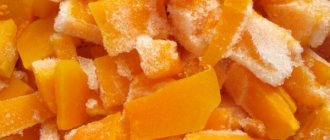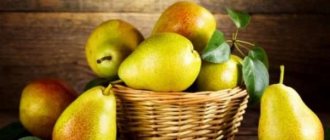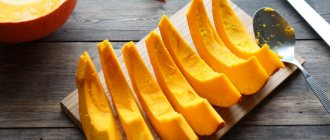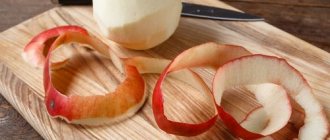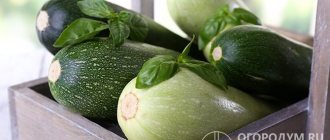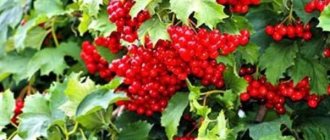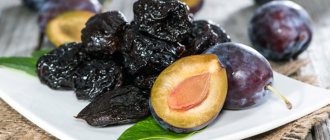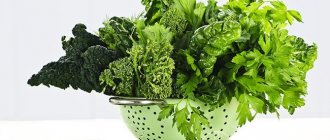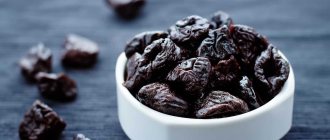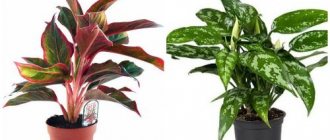Home » Recipes and preparations
Fedurina Nadezhda 07.11.2019
1551 Views
Pumpkin is considered a valuable dietary vegetable for its content of vitamins and microelements.
But in winter you won’t find it on store shelves. Therefore, after harvesting, many summer residents are faced with the question of how and how long to store pumpkin at home in order to enjoy its taste for as long as possible.
Moreover, it is not difficult to do.
Harvesting and preparing it for long-term storage
Proper harvesting is a guarantee of long-term preservation of the taste and commercial qualities of fresh pumpkin.
When is the best time to do this depends on weather conditions and a number of other factors. The main guideline for starting action will be the dried stalk of the pumpkin: it changes color from green to gray. Usually the vegetable ripens in late September - early October.
In order for the vegetable to retain its original properties for as long as possible, it is necessary to follow certain rules when harvesting:
- Remove the vegetable from the garden, being careful not to damage the stalk so that it remains in its place. Why the fruit is carefully lifted to reduce the tension of the tops and cut off, leaving a tail of about 4-5 cm
- Harvesting is done in dry and sunny weather so that the pumpkins are completely dry. Raw fruits stored for storage quickly begin to rot and become moldy, infecting a healthy harvest. As a result, in just a month you can lose all your pumpkin supplies.
- If the time for collecting pumpkins has come, and it is constantly raining outside, then the harvested fruits should be thoroughly dried before storing them in storage. Place them in a dry and well-ventilated room and leave them for 10 days. Only then will the beneficial properties of the pumpkin be preserved until next year
- If possible, it is advisable to wipe each vegetable with a dry rag and inspect for chips, rot and mold. They carefully examine the rejected specimens and put them into processing or try to eat them as soon as possible. This extends the shelf life of the entire crop.
Pumpkin harvest
If pumpkins are not from your own garden, but are purchased, then you cannot take those that completely lack stalks. When they are cut at the root, pathogenic microorganisms gain access inside the fruit.
Reviews
Temperature conditions and darkness are of course necessary, but if the pumpkin is removed at the wrong time, it will still spoil. It is best to harvest at the end of September in dry sunny weather and leave the stalk long - 10 cm or more. Dry thoroughly, then carefully inspect and remove the damaged skin. And then dry it in the sun for a week. The main thing is to choose the right one so that it is whole and not broken.
Nikolay, Voronezh
Yes. And if the fruits are rotten, it’s better not to risk it. they won't keep for long anyway. I immediately either mulch them with a blender, or cut them into cubes and put them in the freezer. Where are the pumpkins that have scratches, you can put bactericidal patches on them, I tried them myself, they are stored normally for a couple of months, they lasted well / But of course I used them first, and the whole ones later.
Olga, Kostroma region
Pumpkin is a very popular unpretentious crop with a pleasant taste. It is popular due to its many cooking methods and is famous for its huge content of vitamins and beneficial microelements. In order to effectively preserve its beneficial properties and enjoy its unique taste all year round, you need to comply with the conditions for collecting, preparing and storing this wonderful product.
Health to you and your loved ones! Natalya Belokopytova.
Varieties most suitable for long-term storage
Select strong and undamaged fruits for storage.
Avid gardeners know which pumpkin varieties to plant that are most suitable for long-term storage. Mostly late-ripening representatives are chosen.
There are a number of species that successfully winter at home:
- Zhdana
- Ioannina
- Slavuta
- Polyanin
- Arbatskaya
All of them overwinter ideally and retain their beneficial properties.
Summary
How to properly store pumpkin until spring? Different storage methods have their advantages and disadvantages. You need to choose one method or another based on many nuances. Having chosen the right pumpkin variety, all that remains is to carry out the appropriate processing to sterilize the product and prepare it for long-term storage.
The shelf life of the harvested crop will depend on the type of room, maintenance conditions and condition of the pumpkin. Decide on your purpose for collecting pumpkins. Will you prepare it for the winter, how often will you need to eat it, will it be useful for decorative and festive purposes, etc. The answers to these questions will be the fundamental decision that will tell you what to do with the pumpkin.
Optimal storage conditions
Pumpkin storage method
After the pumpkins are collected and prepared for storage for the winter, you should choose the most suitable location. It depends on the form in which the fruits are stored - whole or sliced.
In a private house, problems do not arise, since a basement or cellar is suitable for these purposes, where the conditions meet the requirements - cool, dry and dark. It is acceptable to store pumpkins in a cool pantry.
The temperature at which pumpkin is stored for a long time depends on the variety and varies between 5-15 degrees. However, some varieties do well in an apartment. Damp rooms or those that freeze in winter are definitely not suitable for storing pumpkins. Air humidity should not exceed 70%.
The temperature in the basement (cellar) can be different - it is usually cooler below. In such a situation, it is recommended to place the fruits on shelves. If there is severe frost outside and against this background the temperature in the basement tends to zero, then the crop will need to be wrapped in something warm.
Best before date
Depending on the variety, temperature of the storage location and processing method, shelf life differs:
- on the balcony, in the basement: 6-9 months;
- in an apartment, storage room: 4 months;
- in the refrigerator: 10-30 days;
- in the freezer: shelf life is unlimited.
Dried, candied, salted preparations are stored at room temperature for up to 1.5 years.
Whole vegetables become unsuitable for food after the expiration date, even if they look fresh. The pulp hardens and tastes bitter.
Storing pumpkins in the cellar
In a good cellar, pumpkin retains its taste and presentable appearance all winter
It is most convenient to store pumpkins that grow to large sizes in the cellar. Before putting vegetables into the cellar, you need to prepare it to create favorable conditions:
- Clear the storage area of debris and harvest remaining from last year (canned food can be left untouched)
- Ventilate thoroughly so that no trace of mustiness or dampness remains.
- Dry shelves and racks
- Establish ventilation if there is none
- Disinfection is carried out using a smoke sulfur bomb or by treating all surfaces with lime
- The shelves are covered with paper or straw
Storing pumpkins in the cellar
When all preliminary activities are completed, you can proceed to laying the fruits. To be stored whole, vegetables must have a hard shell without defects: dents, scratches or chips.
Place them on wooden scaffolds so that they do not touch. It is unacceptable to dump them in a heap or stack them like a pyramid. It is convenient to place the pumpkins so that the stem faces up. If there are few fruits, it is better to wrap each one in paper or plastic wrap.
In winter, you need to periodically look into the storage and check the condition of the fruits. If a spoiled one is discovered, it is immediately removed from the general composition and the straw (paper) on which it was lying is changed. To prevent condensation from accumulating on pumpkins (this usually leads to rotting of vegetable stocks), you need to put quicklime in the cellar, which is the best counteract to excess moisture in the air. The pumpkin also needs periodic ventilation.
How to store pumpkin in an apartment
Pumpkin must be stored away from light.
There are several known ways to store pumpkins in apartment conditions. Each of them is good in its own way, but there are also disadvantages.
On the balcony
Pumpkin can not only be stored on the balcony, but also grown
Long-term storage of melons on an insulated balcony or loggia is guaranteed due to certain conditions:
- temperature – within 5-15 degrees
- the presence of protection from cold and direct sunlight (use any breathable and shading covering material)
- placing the fruits at some distance from each other so that the sides do not touch
It is advisable to place vegetables in wooden boxes, rather than placing them directly on the floor (no matter what it is covered with). You can line it with paper, boards or plywood.
Throughout the winter, do not forget to check the pumpkin supplies on the balcony, especially when the temperature outside drops below zero. It is important that the fruits do not freeze. To avoid this, wrap them in a warm blanket or thick cloth. There is still a high probability of rotting due to sudden temperature changes.
Inside the apartment
If it is not possible to put the pumpkins on the balcony (loggia), you will have to find a cool place in the apartment
There should be good ventilation and no exposure to sunlight. The ideal place is the pantry. The fruits are stacked at a distance of 2-3 cm.
To prevent vegetables from drying out, you need to systematically ventilate the room and maintain acceptable humidity in it (install a humidifier).
Many residents of big cities prefer to put pumpkins under their beds or keep them in the kitchen. This is fundamentally wrong, although some species tolerate such conditions quite tolerably.
General recommendations
When storing pumpkins, consider the following basic rules:
- Low humidity. The humidity level should remain between 75-80% to avoid rotting and spoilage of the fruit.
- Relative low temperature. Pumpkin is stored well at temperatures from +5 to +15 degrees Celsius.
- Darkness. The absence of artificial or natural light in the place where pumpkin is stored helps to increase its shelf life, so do not neglect this factor.
- Good ventilation. Pumpkin dampening is a fairly common problem that occurs when storing it in small and confined spaces, so it is important to ensure that the fruit is constantly ventilated.
For pumpkin, proximity to other vegetables and agricultural crops is not so important, since the rather dense peel protects the fruit from overripening when ripe vegetables lying nearby emit a special gas.
How to store cut pumpkin
Cut and peeled pumpkin can be stored in the refrigerator
How to save a whole pumpkin has been discussed, now it’s worth understanding the options for storing a cut one. For this case there is a refrigerator with a freezer. This is the best solution for city residents if there is a large amount of product and all the fruits are large-fruited. Although for a small pumpkin there is enough space on the refrigerator shelf.
Any excess pumpkin left over during cooking should be cut into pieces. The same is done with specimens rejected during the autumn sorting of the harvest or during winter storage. You need to wrap the slices in cling film and place them in the refrigerator. There it will remain fresh for two weeks. If you pack it in foil, the shelf life is extended to a month.
To prevent the fruit pieces from drying out, it is recommended to lubricate them with vegetable oil.
Cut and packaged pumpkin is stored in the freezer
You can extend the storage of chopped pumpkin using the freezer . This allows you to save time in the future when cooking, since the vegetable is already prepared (peeled and seeds and cut) - all that remains is to defrost.
How to freeze pumpkin:
- Remove the skin from the fruit, peel the pulp from the seeds and cut it with a knife or use a grater
- Pieces or grated mass must be placed in food containers or special freezing bags. It is important to close them tightly so that air does not enter inside.
- Packages (trays) are stacked on top of each other in the chamber, which saves space
With this method of preservation, the product will last a year or more.
Answers to popular questions
Is it necessary to wrap the pumpkin in something when storing it as a whole?
No, the thick peel protects it from external influences. Additional packaging of the fruit with cellophane, parchment or cling film can only lead to the formation of condensation, which will soon lead to rotting of the vegetable.
Is it possible to store pumpkin without stems?
It is possible, but it will not be stored for long - just like cut fruits.
Does it need to be washed before long-term storage?
No, washing off the protective layer from the peel significantly reduces the shelf life of the vegetable. You can remove excess dirt with gloves or a dry cloth.
Can different varieties be stored together?
It is undesirable because they have different shelf life and storage conditions. It is better to package them in different places.
Alternative storage methods
Candied pumpkin - healthy and tasty!
In addition to the standard options for winter storage of pumpkins, there are others that are no less effective. This is drying, drying, pickling. Pumpkin also makes delicious and aromatic desserts - jam, puree, compotes, jelly and juice.
Drying
Dried pumpkin does not lose its original taste
The advantage of this method is that the dried vegetable practically does not change its taste, but decreases in size and therefore does not take up much space. You can cook dried fruits in an oven or electric dryer at a temperature of 55-60 °C.
Sequence of actions to follow:
- A ripe and healthy fruit should first be washed, then peeled and seeds removed
- Cut the pulp into 1 cm thick slices
- Dip them in slightly salted boiling water for a couple of minutes to preserve their bright orange color.
- Pumpkin slices are laid out evenly on a baking sheet and placed in an oven preheated to 60 °C. Exposure time – about 6 hours
- Then they increase it to 75 ᵒC and wait another couple of hours
Drying pumpkin
The finished dried fruits are allowed to cool and packaged in cardboard boxes or glass jars. If properly dried, they will be stored without problems for about 12 months.
Dried pumpkin has a lot of healing properties and is indicated for vitamin deficiency and depression. Its regular use helps cleanse the kidneys and liver, stabilizes blood pressure and rejuvenates the body as a whole.
The seeds removed from the fruit do not need to be thrown away, as they contain a lot of useful substances. It is better to dry them: put them in a plastic container and place them on the radiator. This way they will dry naturally in just 2-3 days. After which they can be consumed. Some people prefer to fry them, but only after this do they partially lose their valuable qualities.
Pickling
Pickled pumpkin makes a great winter snack
To pickle 5 kg of fresh pumpkin, you will need to take 1.5 kg of table salt. Marinating is carried out as follows:
- Glass jars are sterilized
- Selected fruits are washed in cool water, the peel is cut off and the seeds are removed. Then cut the pulp into portioned pieces of arbitrary size
- Place the slices in prepared and dried jars, then fill them with saline solution. You can sprinkle a little dry salt on top
- Close with airtight lids and store the workpieces in a dark place.
Such canned food will not spoil all winter, even if kept indoors.
Candied fruit
Candied pumpkin will satisfy even the most selective sweet tooth
Another way out of the situation, especially with a large harvest of pumpkins, is to prepare candied fruits. They can later be added to various baked goods or used as a decoration for confectionery products.
Recipe:
- The fruit is washed and prepared accordingly
- The remaining pulp is cut into small slices
- Next, begin preparing the syrup, which will require 200 ml of water, 1.3 kg of granulated sugar and the juice of one lemon. You can add cinnamon (1 stick)
- Pour the syrup over the pumpkin pieces and place on the fire. After boiling, cook them for 5 minutes, then turn off and leave for at least five hours
- After the allotted time has passed, the pumpkin is boiled again. Then you have to wait until the morning
- The next day, strain the pumpkin cubes through a colander. When the syrup has completely drained from them, sprinkle with sugar.
Upon completion of the preparatory activities, you can begin drying the blanks. This is usually done outdoors, in an oven or a special drying device.
In the first case, the candied pieces are laid out on paper where there is good ventilation and there is no direct sunlight. After 2 days, the layout is turned over and left to dry for some time. Then they change its location - move it under the sun and leave it for another 2 days. Typically, the entire procedure takes 7-8 days.
Candied fruits come out faster in the oven. Spread them in a thin layer on a baking sheet and place in an oven preheated to 85 ᵒC. After half an hour, remove and cool. Then the manipulation is repeated, but at 70 ᵒC.
Drying pumpkin pieces is even easier in an electric dryer. First, set the maximum possible temperature. As soon as the product begins to dry out, lower the temperature to 65 and continue the drying process until ready.
This naturally sweet vegetable in the form of candied fruits will be a useful substitute for chocolate and other harmful sweets for children. These vegetable candies have a pleasant taste.
You can learn how to make delicious pumpkin candies in an electric dryer from the video:
VIDEO: Pumpkin and banana candies
Pumpkin and banana candies
How to store pumpkin for the winter at home: on the balcony, inside the apartment, alternative storage methods | (Photo and video)
Pumpkin puree
Pumpkin puree is not only tasty, but also healthy
Pumpkin makes a very tasty and healthy puree or caviar (whatever you prefer to call it). Cooking technology:
- Wash the pumpkin and apples, peeling them from the outer shell and seeds.
- Vegetables and fruits are passed through a meat grinder or twisted in a blender, having previously been cut into pieces for convenience.
- You need to add sugar to the ground mass at the rate of 4-5 tbsp. l. for 1.5 kg apple-pumpkin puree
- This fruit and vegetable mixture must be blanched over low heat for two hours.
- Shortly before turning off, add 1 tsp. citric acid
Immediately the puree is placed in sterilized containers and rolled up.
A sweeter version comes out if you double the amount of granulated sugar added.
If you prepare vegetable caviar, then add 1 kg of tomatoes and carrots (500 g) to the same amount of pumpkin. If desired, you can add zucchini (add to taste). Instead of sugar, add salt (4 tbsp).
Beneficial features
- Purgation. Thanks to the pectin it contains, which is an excellent adsorbent, pumpkin perfectly removes various wastes and toxins from the body.
- Liver restoration. The vegetable dilutes bile and restores the structure of the liver.
- Purifies the blood and strengthens the walls of blood vessels, lowering blood pressure. Pumpkin perfectly removes cholesterol, and also restores and strengthens the walls of blood vessels, increases their permeability and elasticity, and destroys vascular plaques.
- Improving heart function and relieving edema. Due to its high potassium content, it perfectly removes excess fluid from the body, facilitating and improving kidney function.
- Boosting immunity. Eating the product helps increase the body's resistance to colds, improves regenerative properties, and is an excellent anti-inflammatory agent.
- Tonic effect and normalization of the nervous system. Regular consumption of vegetables reduces anxiety and restlessness, improves sleep quality.
Should be excluded from the diet:
- with individual intolerance;
- at low blood pressure;
- for gastritis with low acidity;
- for stomach and duodenal ulcers (especially during exacerbation);
- with cholelithiasis;
- with diabetes mellitus.
What to eat if you have diabetes
For men, the beneficial effect of pumpkin on the reproductive system is especially important: the vegetable helps prevent prostatitis, increases potency, promotes testosterone production and normalizes erectile function.
For women, pumpkin is useful primarily due to its effect on free radicals in the body. The vegetable limits their action, slowing down the aging process.
It is indispensable during pregnancy, it gently relieves swelling, perfectly cleanses the body, and helps prevent vitamin deficiency. Pumpkin juice is successfully used for weight loss, because it has a good fat-burning effect.
For children, the vegetable is an indispensable source of vitamins and microelements that neutralize inflammatory processes in the child’s body and have a beneficial effect on the immune system and nervous system. The fiber contained in the vegetable regulates digestive processes and improves the absorption of nutrients.
Pumpkin oil: benefits and harms, how to take
Effects on liver function
Pumpkin gently cleanses the liver, significantly improving its function.
Pectin, contained in large quantities in the fruit, promotes the rapid removal of harmful substances, toxins and excess cholesterol.
Microelements, which are present in large quantities in the vegetable, quickly restore hepatocytes - liver cells, normalize the process of its functioning.
Pumpkin cleanses the bile ducts, dilutes bile, promotes its better conductivity and the removal of excess quantities from the body. All this is an excellent prevention of cholecystitis and other liver diseases.
Effects on the cardiovascular system
Eating pumpkin reduces the risk of heart attack and stroke, and serves as a prevention of atherosclerosis and thrombosis. Vitamins and microelements found in vegetables help strengthen the heart muscle and lower blood pressure, prevent coronary artery disease, normalize blood clotting, and reduce the likelihood of anemia.
Useful properties of seeds
Pumpkin seeds are extremely beneficial. They are rich in flavor and high in calories.
- the composition of the seeds includes a large amount of fatty acids and easily digestible carbohydrates, which increase resistance to colds and viral diseases.
- they are extremely rich in vitamin E and manganese. These microelements have a remarkable antioxidant effect on the body.
- Magnesium and zinc, contained in large quantities in the seeds, improve the condition of the heart, prostate gland, and also protect against certain types of cancer.
- The phosphorus contained in the seeds is extremely useful for maintaining visual acuity. it also protects the retina from damage from sunlight.
- a large amount of fatty acids reduces the likelihood of heart disease and lowers cholesterol.
- complexes of vitamins and microelements help strengthen bones.
- Separately, we can note the anthelmintic properties of pumpkin seeds, because they perfectly cleanse the body of parasites without side effects.
The seeds of this crop contain a huge amount of useful microelements and vitamin complexes, which are widely used in traditional medicine recipes.
How to keep pears fresh for the winter at home
Most common mistakes
Failure to follow standard rules when harvesting leads to early death
Typical mistakes made by gardeners that lead to premature damage to the crop and interfere with the harvesting process:
- begin to collect fruits ahead of time, without waiting for them to fully ripen
- vegetables are stored in storage immediately after cutting, where within a week they begin to rot and mold
- lay the fruits on bare concrete (you need to lay dry hay or sprinkle sawdust)
- vegetables are not sorted by size before storing (large ones should be placed separately from small ones)
Do not place pumpkins next to apples and pears. Due to the ethylene released by the latter, melons quickly become unusable.
Pumpkin
Useful tips:
- about 10-12 days before the planned pumpkin harvest, stop watering
- the collected fruits must be left to dry in the fresh air for at least a day
- if mechanical damage is detected on the surface of vegetables, it should be treated with a manganese solution or brilliant green (this way it is possible to prevent the development of pathogenic microflora inside the fruit)
Pumpkin is not a particularly demanding vegetable, both when growing and storing. If you follow the rules, you will be able to keep it in its original state until the next harvest, treating yourself and your loved ones with a tasty and healthy product all winter.
This is important because it is during this period that the body is especially lacking in vitamins. And since you can prepare many dishes and desserts from pumpkin, this will help to significantly diversify your daily diet.
You can learn about some secrets of preparing pumpkins for the winter from the video:
VIDEO: Pumpkin storage
Winter pumpkin jam with lemon
Pumpkin is full of vitamins and microelements, to make it more healthy and interesting, we suggest you add lemons to it and prepare pumpkin jam with lemon for the winter! To do this, prepare jam jars with lids in advance. Sterilize them in a convenient way and dry them. When choosing pumpkin for making jam, give preference to sweet garden varieties. The pumpkin must be completely ripe.
What you will need for pumpkin jam for the winter:
- Lemon - 0.5 pcs.
- Pumpkin – 800 gr
- Sugar - 700 gr
- Water - 150 ml.
Recipe, winter pumpkin jam with lemon:
- First you need to prepare the pumpkin. Using a sharp knife, remove the inner fibrous edge to form a firm pulp. Cut off the outer peel
- Cut the pumpkin into pieces, add water and cook for 30 minutes until the pulp softens. At this point, you can leave the pumpkin in pieces or make it smooth.
- Add sugar and juice squeezed from half a lemon. Place the jam on the stove and bring to a boil. For this, set the heat to minimum.
- Cook the jam until thick for another 30 minutes. Stir occasionally to prevent it from burning. It is best to stir with a wooden spoon.
- Pour into sterile jars and secure with sterile lids. Turn it upside down, wrap it up and leave it to cool for a day. After which you can turn the jars over and put them in a cool place for storage.
